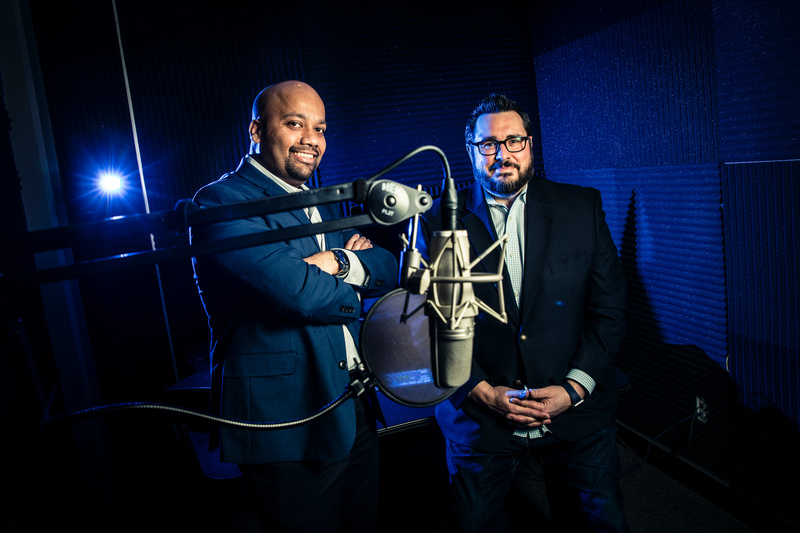
In the ever-evolving technology landscape, data analytics and data strategy continue to play a larger role in economics and business models. Director of the Center for Applied Artificial Intelligence at the University of St. Thomas, Dr. Manjeet Rege, co-hosts the "All Things Data" podcast with adjunct professor and Innovation Fellow Dan Yarmoluk. The podcast provides insight into the significance of data science as it relates to business models, business economics and delivery systems. Through informative conversation with leading data scientists, business model experts, technologists and futurists, Rege and Yarmoluk discuss how to utilize, harness, and deploy data science, data-driven strategies, and enable digital transformations.
Rege and Yarmoluk spoke with Michael Gale about the importance of digital transformation in the business world. Gale, WSJ, Forbes and Amazon bestseller of "The Digital Helix: Transforming Your Organization's DNA to Thrive in the Digital Age" is one of the foremost authors and thought leaders on Digital Transformation. He founded Strategic Oxygen in 2001, widely seen as one of the technology industry's primary data toolsets for marketers, used by over 20 brands and used to model over $4 billion in marketing and sales investments.
Here are some highlights from their conversation.
Q. What does digital transformation really mean for today's enterprises and why is it important?
A. We have historically lived in a horse and buggy based IT environment. We do something, we send it out, it comes back to us three days later, or minutes, or seconds. Digital transformation is this dramatic effect on the way we think about businesses. As cars were when it affect the way we thought about manufacturing, what we think about infrastructure, what we think about telecommuting. So, the world of horses and carts looks nothing like the world of cars. The world of IT looks nothing like the world of a digitally transformed environment where everything matters in real time in microseconds. And decisions are made often subconsciously by a business because they want to become a digital platform. They actually want customers and employees and partners to function as the mirror or window through the digital eyelet that they are working with.
Q. Where should enterprises start in terms of this digital transformation journey?
A. Well I think the reality is that it can’t be with technology. It has to be with a vision. So you have to be able to say, “Look. What do we want to be in a world of 3 or 5 years time?” Maybe companies with horse and buggy type systems are thinking that this car thing could change the type of economics we have. The thing we found from the book and other types of research a few years ago was that really successful companies, really successful organizations, their executives spend on average 17.5 hours a week thinking about digital transformation. Designing their workplaces around digital transformation and experimenting. That’s two and a half days a week. So if you think about a busy executive in sales, they could be thinking two day out of the week, “how do I digitally transform the way I work with my customers?” It needs that intellectual surgery on a consistent basis to get there. The array of technologies in front of us is so exciting right now. Could you imagine saying to a horse and buggy company, “You could get a car to run at 200mph and it would be run by this thing called a computer?” That is the magnitude of difference I think we see in front of us. Unless you can imagine that, and think about applying it, we will do what I call digital wrapping, which is when we wrap that business in something digital, but we don’t change its core DNA. So for me it’s not about the technology, because it’s all remarkable. It’s about how did you get it to work.
Q. What do you say to the medium-sized enterprises that have resource restrictions, yet need to go towards digital transformation? How do you tell them to take these steps forward?
A. Find three places that you can digitally transform that are connected inside of your organization. Start there. Don’t just pick one, because it will be an island, but pick three connected areas. Say to yourself, “what could we do in 180 days to transform the functionality of those areas?” And I think that 180 day limit helps your control budget. I think the last piece is, you are going to make mistakes. Live with it. You cannot succeed in the new world by using old tools to solve your problems. So you have to accept that your businesses have to transform.
Listen to the full conversation below:







